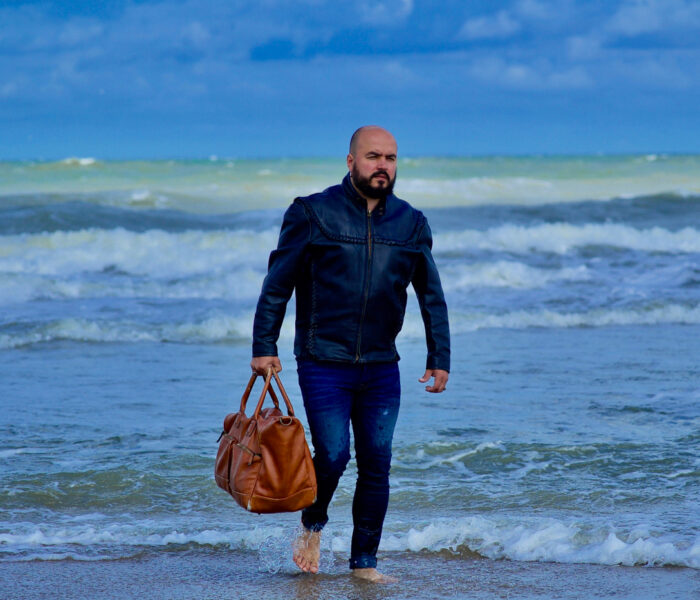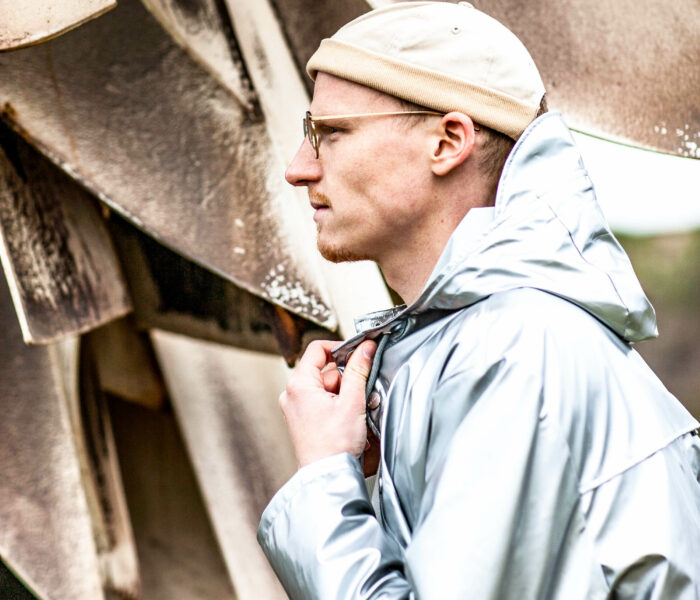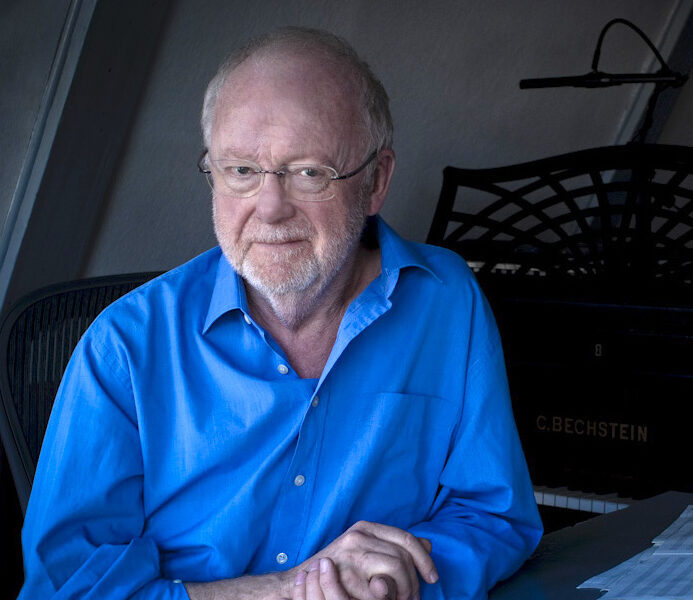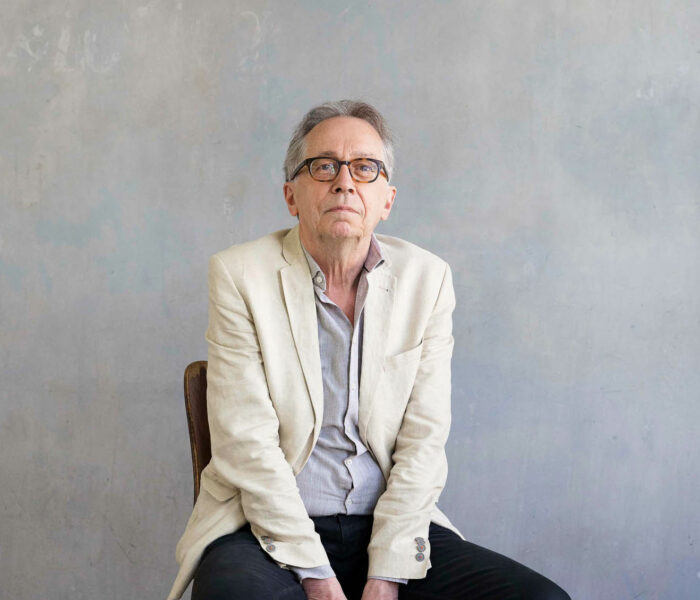Attracted by the progressive musical climate, countless aspiring composers found their way to one of the Dutch conservatoires. Among them the Greek Calliope Tsoupaki (Piraeus in 1963) and the Scottish Geneviève Murphy (Dundee in 1988). Why did they come to the Netherlands, and how has this impacted their artistry? A double interview by Dutch musicologist Thea Derks.
When and why did you decide to move to the Netherlands?
Calliope Tsoupaki: I decided to leave Greece in the 1980s, the "golden age" of contemporary music, with great composers such as Louis Andriessen. I wanted to explore this world, expand my musical horizon, learn, create, get to understand my talents, and discover what kind of composer I wanted to be.
I'd heard from colleagues back in Athens that the contemporary music scene in the Netherlands was flourishing, and Andriessen once came to Piraeus for a concert with the De Volharding ensemble and Frederick Rzewski. Unfortunately, I missed this, but I went to Darmstadt in 1984 and 1986, where I met the Dutch delegation. I longed to be a part of this amazing contemporary music practice and decided to go study with Andriessen in the Hague. After a year of preparations, I left for good on a sunny Sept. 2 afternoon in 1988.
Genevieve Murphy: I moved to The Hague Royal Conservatoire in 2011 to do a Masters in composition, having completed my Bachelor at Birmingham Royal Conservatoire. This maintains warm ties with The Hague and my teacher Joe Cutler suggested I visit and consider applying. At the time I was dividing my time between Birmingham and London.
I worked with Turner Prize winner Martin Creed on his ballet Work No. 1020, and became inspired to choreograph a dance work that combined with my compositions. I wanted to create a work where the dancers would have ownership of their surroundings, making sound, trigger light etc. The Hague Conservatoire was open to this idea and I felt excited to enter into new territories.
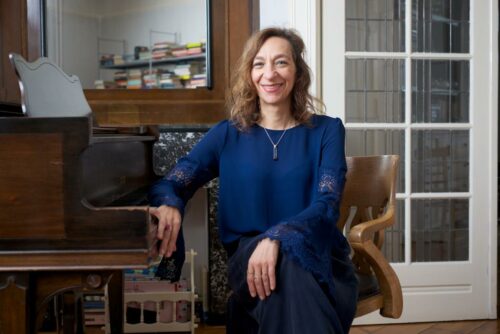
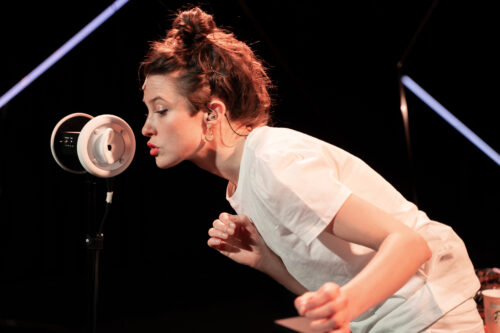
What, if any, difficulties did you encounter?
CT: My difficulties mainly sprang from my artistic choices, which were strong and quite different from what was expected of a young composer in the 80s and 90s. Those days it was all about complex ‘abstract’ music. I focused on very melodic elements and structures, which many found hard to stomach.
Being a young woman composer wasn’t easy either. On the one hand, I easily attracted attention, but on the other, I found it difficult to be taken seriously. Yet I was very determined not to let anything get in my way and succeeded in writing the music I wanted – and have it all performed. Fortunately, audiences and many musicians liked my work. Already in my first year several, I was commissioned to compose new pieces. This felt like a victory and helped me a lot.
GM: I was aware I was entering into a discipline (dance) I had no real knowledge about. I had to be brave and slightly mad in order to throw myself into such a different art form, for I needed to research intensely in order to find my own language and approach. Next to this, I continued composing for ensembles assigned by the conservatoire, so I was working hard to enrich two languages. I am glad I persevered. I approached it like a composer and developed a way of notating and creating systems. By being so on top of my decisions, I learned much about the things I couldn’t control. I carried those lessons into my career thereafter.
Did you easily find your way in the modern music scene?
CT: As I said, my personal artistic choices were so obvious and different that I got negative criticism and had some unpleasant experiences… But this is part of any composer’s life.
GM: After graduating from The Hague I was exhausted. I had worked so hard and was going through some personal difficulties. I moved to Amsterdam and continued to compose but I didn’t land straight into commissions. Though I did compose for choreographer David Middendorp and wrote some graduation pieces for theater students. It’s incredibly hard to graduate from any art degree – you pass through a state of feeling lost, yet must never give up. Emotionally I was going downhill, so I returned to Scotland temporarily for therapy.
Which institutes/ensembles/people were important in your move to the Netherlands?
CT: First and foremost, the Royal Conservatory in The Hague, which welcomed me as a composition student. This opened the door to new opportunities and enabled me to integrate into the Dutch music scene. Then there was the Ysbreker, an extraordinary concert hall dedicated to contemporary music that welcomed the most radical pioneers. It was also a café where I could rub shoulders with them and discover their work.
GM: Back in Scotland, Martijn Padding, my old teacher from The Hague, asked me to work with him on sound editing. He knew what I was going through, but trusted me, which kept me going. I came back to the Netherlands for the premiere of Homage to (and with) Anner, and met Joël Bons, the artistic director of the Nieuw Ensemble, to whom I showed my creations.
Most of these compositions lacked depth. They were both too extravagant and superficial. However, I played him Old Friends, a piece I'd written in my spare time, without much thought, just for fun. It was a short, pop-influenced minute of music. He said: "This kind of thing would do contemporary music a world of good" and invited me to compose for An Evening Of Today, a concert with the Nieuw Ensemble at the Muziekgebouw in Amsterdam. Delighted to be able to do something I liked, I went on to compose for them for F.I.N.E, which launched my career and enabled me to return to the Netherlands.
Fine. from Genevieve Murphy on Vimeo.
Could you give a short description of your approach to music?
CT :
Personal
Direct
Agile
Reflective
Multi layered
Narrative in many levels
Warm
Seeking for another way to say things
Sharing emotions
Strict and sharp and free
Clear
Vibrant
Very melodic
Structured but also spacious
GM: First I think about the concept, then the atmosphere, followed by timbre, textures and general energy. I also consider the context and ask myself: "How are the audience seated? Are they seated at all? Are we in a concert hall or outside?". Then I start composing the notes.
Has your own approach to music changed in the period you've lived in the Netherlands? If so, how?
CT: My music is changing all the time. I have been developing many facets of my artistic and compositional self. I have composed chamber music for baroque instruments and middle Eastern instruments, created hybrid works such as my requiem Liknon, the adventure piece Odysseus, the play for music and scent Narcisse, the hybrid St Luke Passion, etc. These days I am writing orchestral works, bringing my very personal sound into the orchestra repertoire.
GM: Of course, I draw on all kinds of influences, and not just musical ones. There's a real abundance of culture in the Netherlands, which allows me to discover all kinds of works of art. My work is presented in concert halls, art galleries and theaters. I practice free improvisation and performance and have a band with Andy Moor and others, which I'm developing more and more - playing with musicians ranging from classical to punk.
I also incorporate Highland bagpipes into my compositions, which came to me while playing with an artists' collective in Amsterdam. They discovered that I had learned to play this instrument when I was younger and asked me to bring it back from Scotland. I've never regretted it!
In how far does your personal life play a role in your compositions?
CT: It plays a very important role, e.g. my motherhood. You are no longer on your own but realize you depend on others. By accepting this dependence, you understand that everything is relative and that one’s personal human values of loving and caring for others are equally important as one’s creative self. I used to think life is more important than a piece of music, but I find each day that I’m giving my life to my art. A paradox that makes life worth living.
GM: All of my work is personal. My artistic approach is diverse, but my concepts are always based on psychology and disability. I share my work from a personal perspective, either from an experience I’ve heard about or one that I have personally witnessed. I never make a point of being Scottish but if the work truly is mine, the Scottish aspects come through nonetheless.
You work with artists from other disciplines and employ multimedia. How does this affect the outcome of a piece?
CT: I like this question! I am not a ‘typical classical composer’, which means I am not at my desk or piano all the time studying music of a colleague in order to read, listen and study. Instead, I am smelling perfumes, visiting an exhibition, watching films, trying to understand how it is to be in a club and how music manipulates us… This is a multidisciplinary kind of life.
I think films have affected the development of form in my music more than traditional concepts and techniques. Also, the interaction between music and dance in a club is amazing, for it makes you perceive things in a different way. You can find new forms of communicating and get acquainted with how younger people approach the world.
My multi-sensory composition Narcissus: A Play for Music and Scent was an experiment. Live onstage we diffused scents that had been specially developed for the music – not after the score was finished, but in a parallel creative process. I smelled a fragrance and thought about what music to write, while scent expert Tanja Deurloo listened to musical fragments and then created the next ‘scent note’. The result is a ritualistic one-hour piece, a journey of Narcissus to the underworld. In the end, a crazy, fictional, blooming flower lingers in the air: scent and music have become one!
GM: I worked with fashion designer Tom van den Borght. He made two incredible outfits for At The Spot Where I Find Myself, a solo for theater. Without his contribution I wouldn’t have created the piece I did. My work entered a new dimension. Both due to the visual and physical presence of the outfits and their impracticality: they were incredibly heavy – 45 kg altogether!

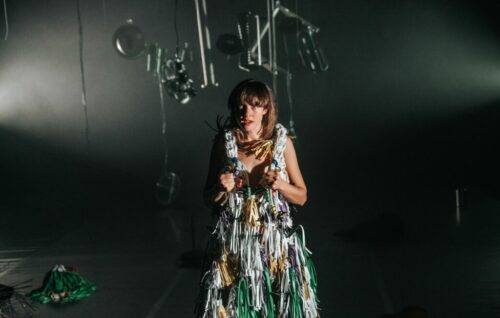

In view of the current gender issue : would you say that being a woman composer has ever been a disadvantage?
CT: If I would say that there was never any discrimination, I would tell a lie. But in my case, I had no time to reflect on that. In Athens in the ‘80ies, some argued that women can’t compose or drive cars, or whatever, but I simply lacked the time and energy to take this seriously.
I made decisions for which I needed all my power. – To leave my home country, adjust to the situation in the Netherlands, study and focus on how to write my music. Looking back now, I see it was not easy at all. My teachers back home never saw a composer in me: I was a girl, so I did not fit the picture. Some friends even warned me that studying composition would cost me my relationships!
GM: I have found in the past that I have been taken less seriously than my male peers. Though my work is very serious, I approach it with playfulness and humor. I have been called ‘balloon girl’ because of using balloons – yet the concept was about insecurity and breaking down forms.
When I perform my music, I often get a response that I am like Laurie Anderson or Björk. Many female peers get the same feedback. It really is only evidence of a limited knowledge for experimental female artists. I find this sexist and ignorant. It would be like male artists only ever being compared to Michael Jackson and Elvis… or The Beatles!
Interview by Thea Derks in Amsterdam, October 2023
With the support of Performing Arts Fund (NL)
Photos © Michiel van Nieuwkerk
Photos © Isabelle Renate la Poutré
Photos © Bas de Brouwer



)
